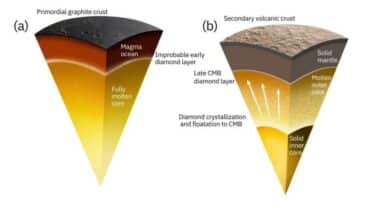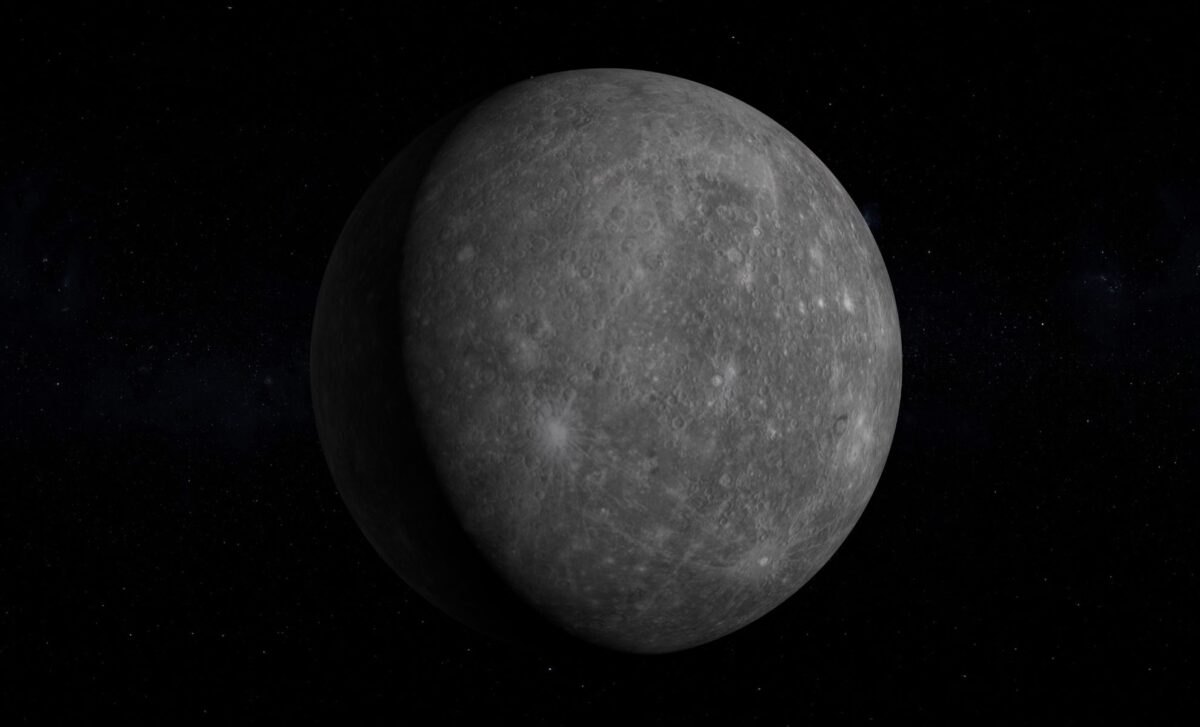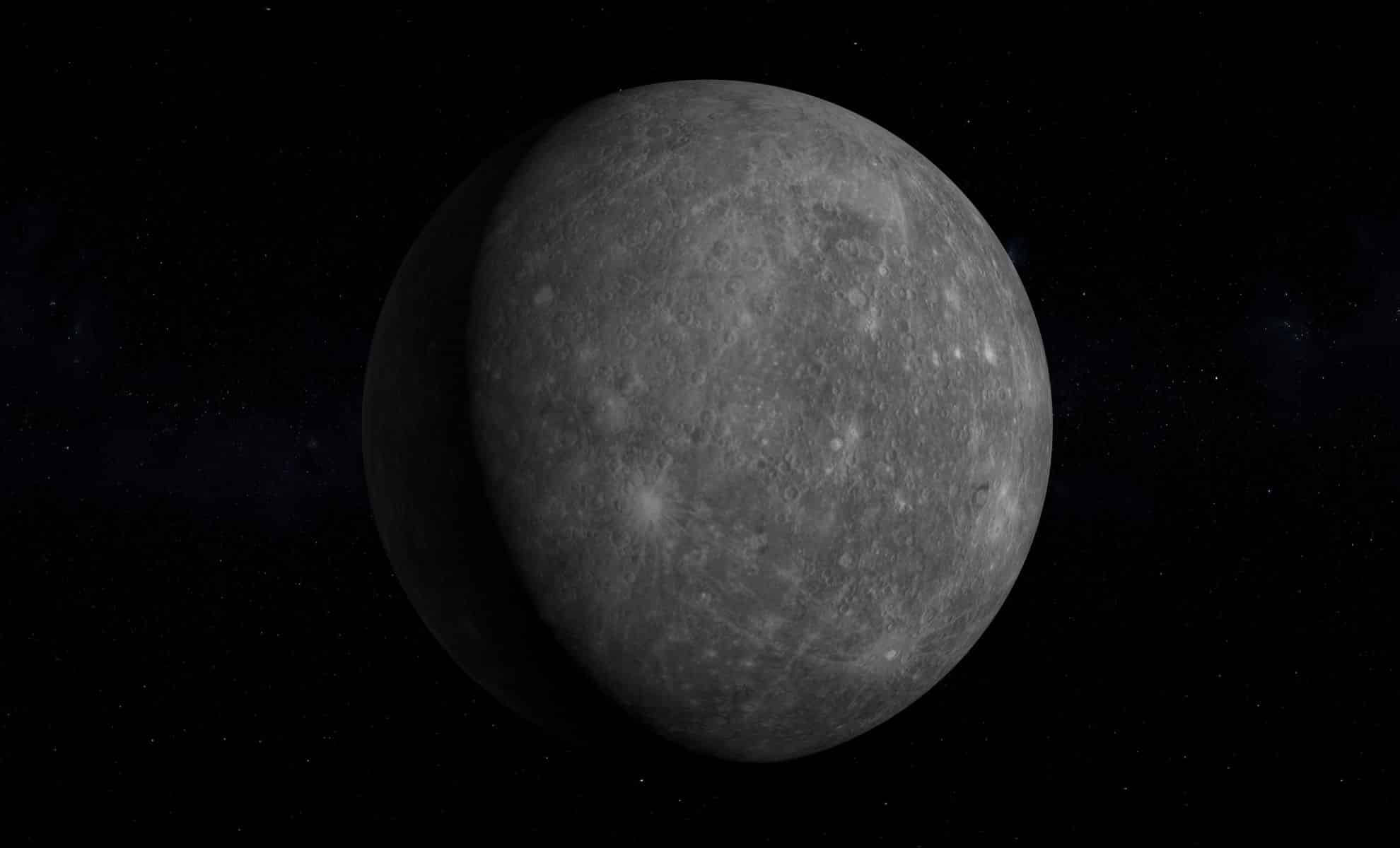Recent research suggests that Mercury may harbor an extensive diamond layer up to 18 kilometers thick at its core-mantle boundary (CMB).
This groundbreaking discovery, achieved through a combination of computer modeling and high-pressure experiments, provides new insights into the planet's interior composition and geological history.
The Presence of Carbon on Mercury: From Graphite to Diamonds
Mercury's surface has long been known to contain significant amounts of carbon, predominantly in the form of graphite. The dark color of Mercury's surface, revealed by NASA's MESSENGER spacecraft, is attributed to this graphite.
However, new research indicates that under the extreme pressures and temperatures present deep within Mercury, this carbon could transform into diamond. Dr. Yanhao Lin from the Center for High Pressure Science and Technology Advanced Research in Beijing highlighted the implications: "Many years ago, I noticed that Mercury's extremely high carbon content might have significant implications. It made me realize that something special probably happened within its interior."
The researchers' experiments aimed to replicate the intense conditions within Mercury's core-mantle boundary, where pressures reach up to 7 Giga Pascals (GPa), around seven times the pressure at the deepest parts of Earth's oceans. These conditions revealed that carbon, subjected to such high pressures and temperatures, crystallizes as diamond instead of graphite. This transformation suggests that Mercury's interior could contain vast quantities of diamond.

Recreating Mercury's Interior Conditions: Experimental Insights
To investigate how diamonds could form within Mercury, researchers conducted high-pressure and high-temperature experiments using synthetic silicate to simulate Mercury's mantle composition. These samples were subjected to pressures and temperatures reflective of those at the CMB. The experiments demonstrated that under these extreme conditions, carbon can transition into diamond.
Dr. Lin elaborated on the experimental process: "What we do in the laboratory is to mimic the extreme pressures and temperatures of a planetary interior. It is sometimes a challenging thing; you need to push the devices to fit your needs. Experimental setups must be highly precise to simulate these conditions." Additionally, the presence of sulfur in Mercury's iron core acts as a melting agent, influencing the crystallization process and promoting the formation of diamonds. This sulfur-induced phase separation plays a crucial role in the unique geological phenomena observed on Mercury.
Implications for Mercury's Magnetic Field and Planetary Differentiation
One of the most intriguing aspects of this potential diamond layer is its impact on Mercury's magnetic field. Diamond's high thermal conductivity could facilitate efficient heat transfer from the core to the mantle, affecting the planet's thermal and convection dynamics.
This, in turn, could influence the generation of Mercury's unexpectedly strong magnetic field. Dr. Lin explained, "Carbon from the molten core becomes oversaturated as it cools, forming diamond and floating to the CMB. Diamond's high thermal conductivity helps transfer heat effectively from the core to the mantle, causing temperature stratification and convection change in Mercury's liquid outer core, and thus affecting the generation of its magnetic field."
The study also offers broader implications for understanding planetary differentiation—the process by which a planet develops distinct internal layers such as a core, mantle, and crust. The researchers suggest that similar processes leading to the formation of a diamond layer on Mercury might have occurred on other planets with comparable sizes and compositions, potentially leaving analogous geological signatures. This insight could reshape our understanding of planetary evolution across the solar system.
Future Research Directions and Broader Significance
This research paves the way for further exploration of Mercury and other carbon-rich planetary bodies. The insights gained from these experiments and models refine our understanding of planetary formation and evolution, particularly for planets with high carbon content. The presence of diamonds within Mercury's interior adds a fascinating dimension to our knowledge of the planet and underscores the complex interplay of pressure, temperature, and chemical composition in shaping planetary geology.
Dr. Lin emphasized the broader significance of this discovery: "It also could be relevant to the understanding of other terrestrial planets, especially those with similar sizes and compositions. The processes that led to the formation of a diamond layer on Mercury might also have occurred on other planets, potentially leaving similar signatures."
The discovery of a potential diamond layer at Mercury's core-mantle boundary underscores the importance of high-pressure experiments and computer modeling in planetary science. As researchers continue to explore these extreme conditions, we can expect to uncover more secrets about the formation and evolution of planets both within our solar system and beyond.




